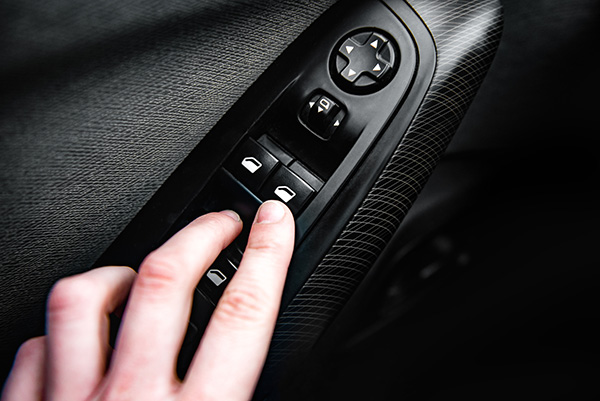
Power windows are one of those car features that you might take for granted—until they stop working. When they do, it can be a real hassle. Whether you’re stuck with a window that won’t roll down on a hot day or one that won’t stay up when it’s raining, malfunctioning power windows can disrupt your driving experience. But what causes power windows to fail in the first place? Let’s explore the five most common reasons your car’s power windows are not working as they should.
1. Electrical Issues
One of the most frequent reasons for power window failure lies in the car’s electrical system. Since power windows operate through a complex network of wires, fuses, and switches, any disruption in this system can render the windows non-functional.
Blown Fuses
A fuse’s job is to protect the car’s electrical components from damage due to an overload. If a fuse connected to the power windows blows, the circuit breaks, causing the windows to stop working. Replacing the blown fuse can restore window function, but it’s important to determine why the fuse blew in the first place to prevent recurring issues.
Faulty Window Switch
The switches used to control your power windows can wear out over time. A malfunctioning switch might fail to send the correct signal to the window motor, leaving the window stuck in one position. You may notice that the switch feels different when pressed or that there’s no response when you try to operate the window.
2. Window Motor or Regulator Failure
The window motor and regulator are the components responsible for physically moving the window up and down. These parts can wear out over time, especially if they’ve been subjected to frequent use or if the window has been sticky or misaligned.
Worn Out Motor
The motor powers the window’s movement, and when it fails, you might hear a faint clicking sound but see no movement. Sometimes, the window may move slowly or get stuck halfway, indicating that the motor is struggling.
Faulty Regulator
The regulator is a mechanical assembly that guides the window’s movement. If the regulator becomes misaligned or breaks, you might hear grinding noises or see the window slide down into the door. Replacing a faulty regulator can be more complex and may require removing the door panel, but it’s necessary for restoring proper window function.
3. Wiring Problems
Another reason your power windows might not be working is due to wiring issues. The wires that connect the switches to the motor and other components run through the doors, where they are subject to constant movement as the doors open and close. Over time, this can cause the wires to become pinched, frayed, or even broken.
Damaged wires can prevent the electrical signal from reaching the motor, resulting in an unresponsive window. Diagnosing wiring issues often involves tracing the wiring path and checking for continuity, which can be a detailed process. Sometimes, a simple repair can fix the problem, but if the damage is extensive, the entire wiring harness may need to be replaced.
4. Mechanical Obstructions
While electrical problems are common, mechanical obstructions can also prevent your windows from functioning properly. Dirt, debris, or ice can accumulate in the window tracks, creating resistance that the motor might not be able to overcome.
If the window is struggling to move or makes unusual noises, it’s worth checking the tracks for any obstructions. Cleaning out the tracks and lubricating them can sometimes resolve the issue. However, if the window still won’t move, it might be a sign of a deeper mechanical problem.
5. Environmental Factors
The environment can also play a significant role in the performance of your power windows. Extreme weather conditions can cause problems with window operation, especially if the seals and weatherstripping around the windows are worn or damaged.
Cold Weather
In cold climates, windows can freeze in place, making it difficult to move them. Forcing a frozen window can damage the motor or regulator, so it’s best to wait until the window thaws before attempting to operate it.
Heat and Moisture
In hot weather, the seals around the windows can expand, creating additional resistance. Moisture can also seep into the electrical components, leading to corrosion and eventual malfunction. Regular maintenance of the seals and weatherstripping can help prevent these issues and keep your power windows in good working order.
Need help with your car’s power windows? Strande's Garage is here to provide fast and effective repairs. Contact us now to book your service appointment and keep your vehicle in top condition.